Automate Creative Refresh with Creative Automation
Generate 1000s of creatives from a spreadsheet & save hours on creative refresh by leveraging bulk-editing, and AI copywriter.
Book a Demo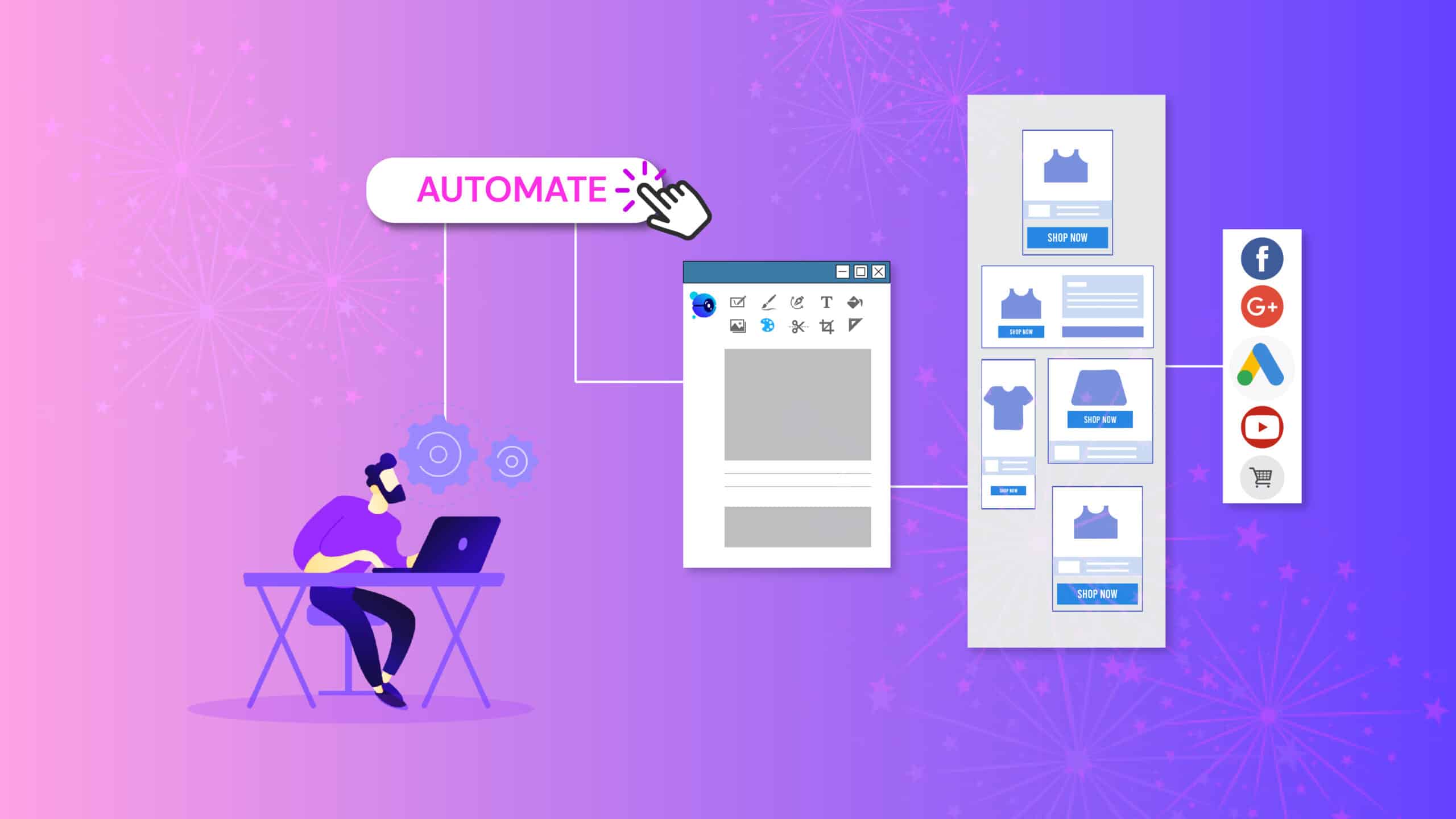
Generate 1000s of creatives from a spreadsheet & save hours on creative refresh by leveraging bulk-editing, and AI copywriter.
Book a Demo
COVID-19 may be hogging all the limelight. However, there is another pandemic lurking in the world today that few know about – except growth marketers, that is!
This is the pandemic of banner blindness, and it is only growing with time.
Today, the average consumer is exposed to hundreds of competing messages – from push notifications and emails to display ads daily.
The result is they have become more selective about what they pay attention to. And it is this attention-deficit that is getting in the way of brands hitting their engagement and conversion goals.
To counter this, businesses across industries have been leveraging the power of creative refresh.
Given the popularity of memes, quotes, videos, and infographics, they are perfect for delivering short, compelling marketing messages that are up to 65 times more memorable. However, there is a catch.
Even the most relevant banners have a limited shelf life – much like a vaccine. Therefore, if you are running a high-volume campaign targeting multiple cohorts, you need to rotate your ads to maximize campaign ROI regularly. This is called Creative Refresh.
There are hundreds of ways to refresh creative content. For example, you can create different variations based on your segmentation strategy by changing the CTA, backgrounds, text, and images, rotating them at different intervals.
You could even tweak the format by adding some video or audio elements. This can help you keep consumers engaged and convert them faster.
Creative refresh is the often missing link between intent and conversion. However, even the most engaging banners and videos can only drive engagement for a few days. Beyond that, you are likely to notice a steady drop in CTR.
The solution: feature custom images and CTAs for each product category or campaign. Localizing ads with the use of regional languages and cultural themes is also proven to help engagement.
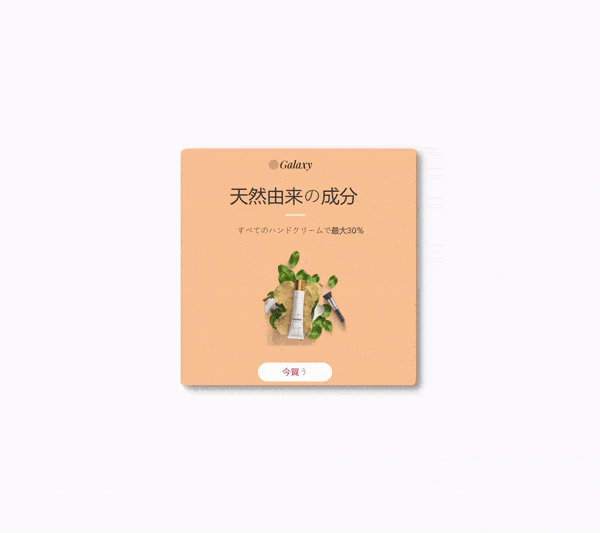
Personalized creatives are especially critical for in-app campaigns, given the relatively limited screen space. The sheer volume of adaptation this involves can overwhelm even the best design teams.
Now, even if your team did manage to produce new creatives at a fast enough rate, how does one determine the right refresh frequency across different channels and cohorts? There are other factors to consider too. Like:
To answer these questions and more, Rocketium held a panel discussion in association with ET BrandEquity, featuring the marketing and creative heads of some of India’s top brands like MMT, Urban Company, Cars 24, Udaan, etc.
The session aimed at sharing insights around how leading unicorns like Urban Company leveraged creative refresh to drive growth.
There is no one size fits all when it comes to creative refresh. Banner blindness is higher if you run a limited number of display ads at a high frequency.
This is why brands need to keep a close eye on CTR to identify the best time to refresh and add more variations at regular intervals.
Research shows that the frequency of refresh varies widely from industry to industry. For example, the average creative lifecycle for the home goods industry globally was 25 days, while that for retail was 35 days.
Studies also show that average refresh rates tend to vary across platforms. For example, for Facebook and Instagram, the average creative life cycle was 36 days.
However, the top brands were rotating creative every 10.4 days. The obvious inference: it is best to stay ahead of the average for your industry or preferred platform.
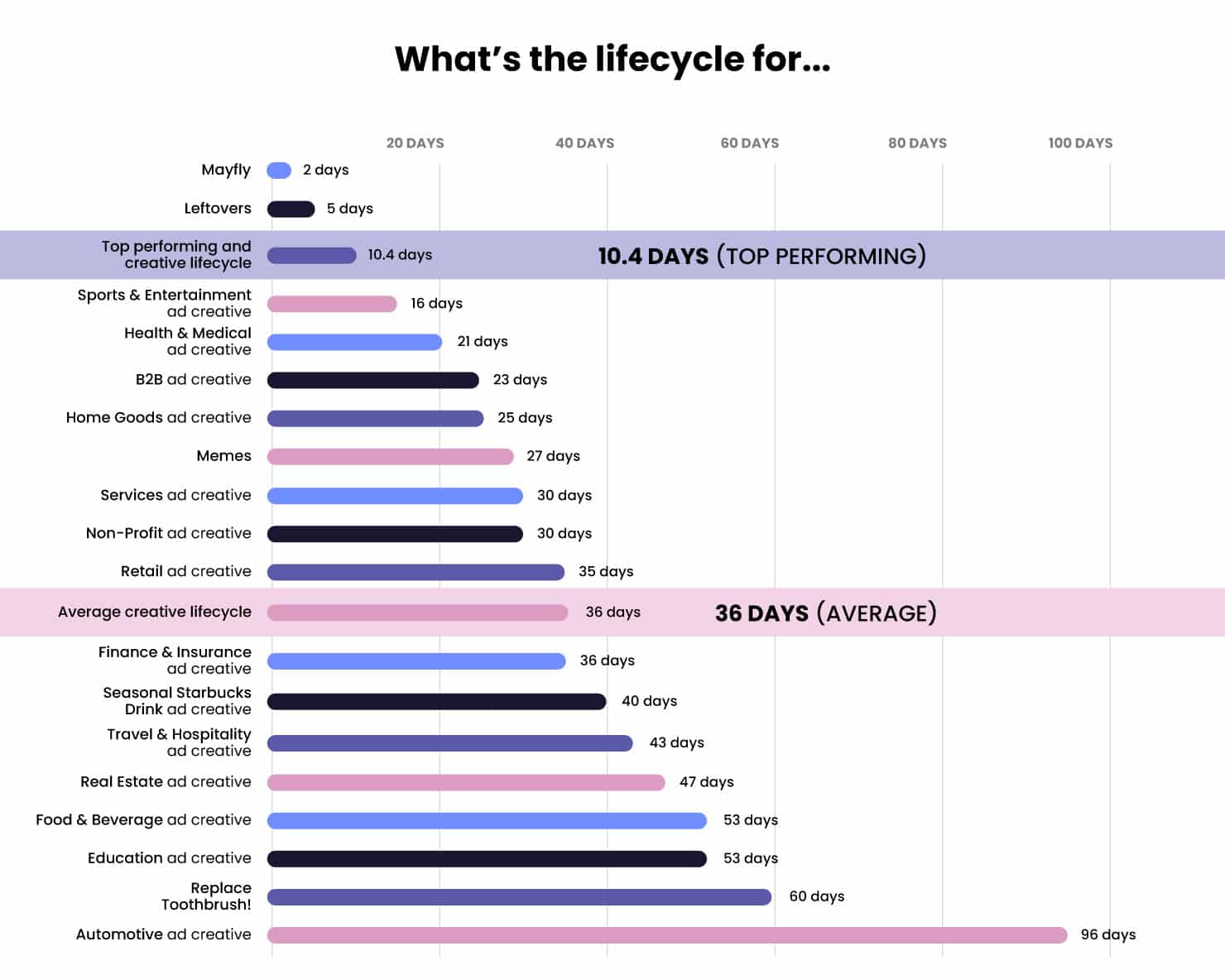
According to the esteemed panelists, measuring frequency and reach was more important than their duration when setting an optimal refresh rate.
In addition, they agreed that personalization based on data insights was critical to driving engagement in the post-pandemic era, with ‘safety’ being a key attribute that brands needed to communicate to their audiences.
Another key point that the panelists emphasized was the need for investing in retargeting to drive conversions.
Comparing CTR at regular intervals was one of the best ways to measure creative fatigue and replace the existing creatives with new ones as the situation may demand.
However, it is important for brands to remain consistent with their messaging even when adopting new styles across campaigns.
This will create a sense of continuity for consumers and shorten the discovery to conversion journey.
Of course, CTR isn’t the only indicator you should be looking at. For native campaigns, marketers should also focus on Time on Page, Bounce Rate, Average Session Duration, Social Sharing, and Conversion.
Like any customer-centric brand, Urban Company’s creative refresh strategy is guided by customer behavior. Rajat Khullar, the brand’s creative head, said his team tracked customer activity across different touchpoints.
For example, they studied whether consumers showed intent towards more than one product or service during a given session. This data was then plugged into the creative strategy.
Khullar explained that Urban Company leveraged the Principles of Systems Thinking to create the right balance between different elements like brand device, typography, color, imagery, composition, and layout.
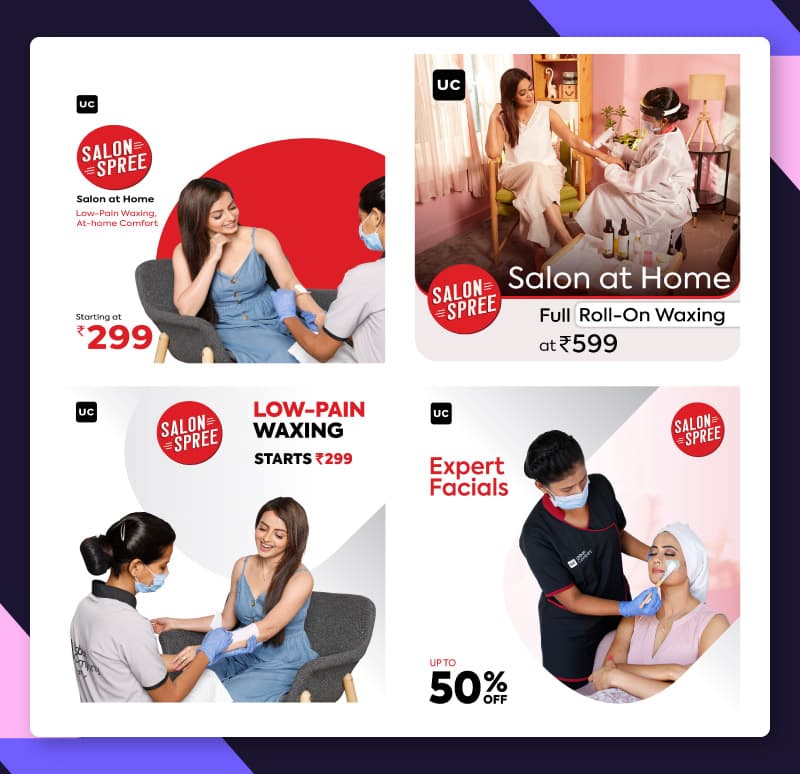
An on-brand experience across different creative sets was critical to building brand recall, he emphasized.
As a result, Urban Company adopted an ecosystem approach, whereby the team created templates for various campaigns such as social, web, and even OOH.
In addition, the team was keen on correctly interpreting customer needs. After all, the design and messaging strategy would have to be adapted depending on whether customers were looking at the price point, service, or brand value.
While providing as much product information as possible was necessary, it had to be simple and easy to digest. The reason: declining attention spans. This was especially vital during the consideration stage.
Khullar gave the example of a recent campaign his team had run centered on painting services.
They wanted the creative to convey the reassurance that comes with having a professional company handle the job, thereby creating a brand presence.
However, the challenge was maintaining brand presence throughout a TVC or display ad campaign.
So, while retaining the overall theme of simple, well-packaged, easy to consume messaging with a compelling takeaway, the team decided to test a creative hack.
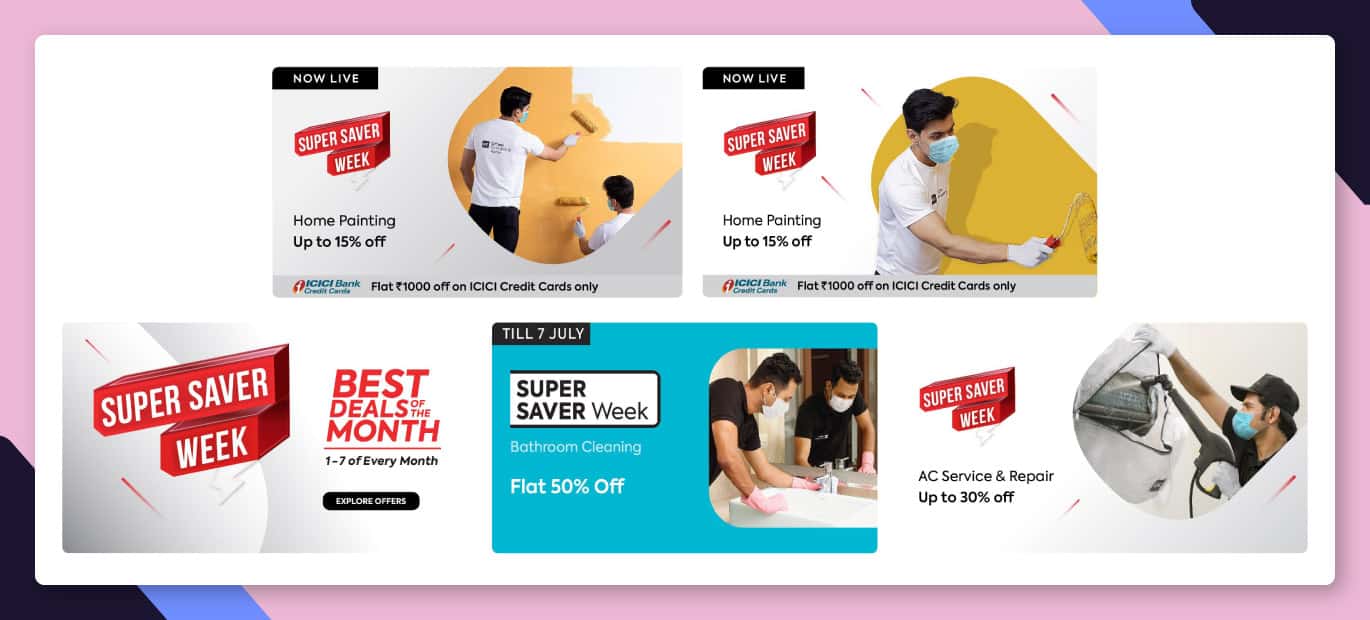
They came up with what Khullar calls ‘hero banners’ – a set of ‘super saver’ offers designed to create immediacy – when most people get their salaries around the start of the month.
Next, they developed category banners advertising Urban Company’s painting services on the same theme to add greater context.
Finally, they designed the images to pop out of the ‘device’ or graphic frame, creating a better visual effect.
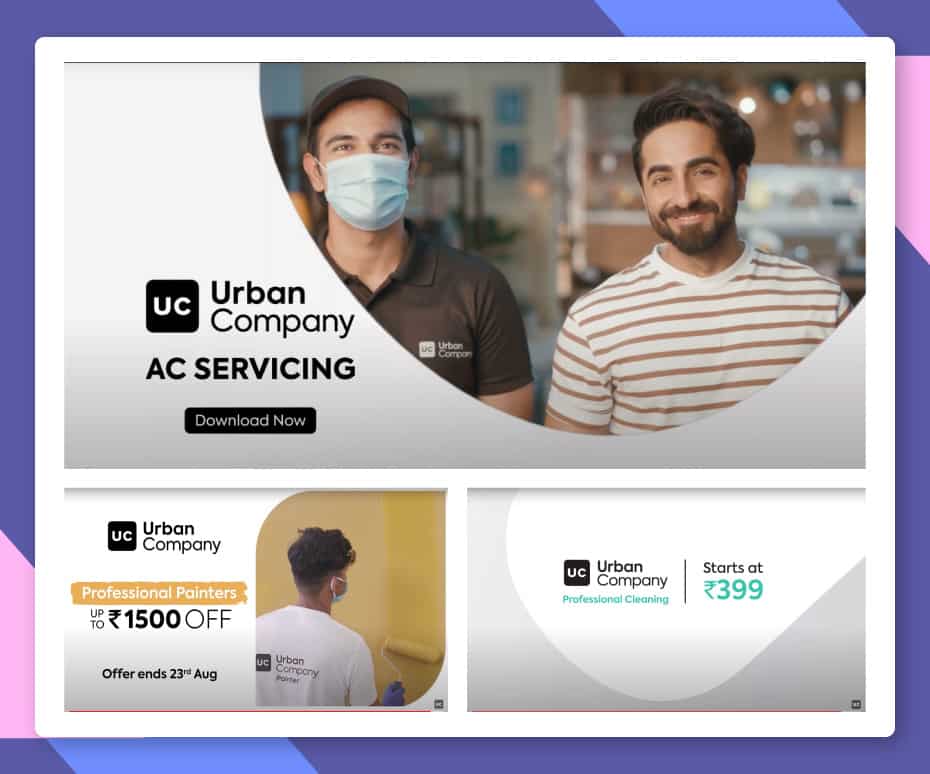
Khullar explained that the new layout did a better job of conveying expertise, trust, and professionalism on the part of the brand. Sticking to formulaic design systems that make standardization easier is essential.
However, it was also necessary to leave some room for experimentation, he says.
Replying to a question about how often Urban Company refreshed their creative, Khullar advised creating a cheat sheet or framework for different channels such as social media, in-app banners, etc.
This would serve as the basic do’s and don’ts for the base level creative, used daily.
The next step was to evaluate customer needs and experiment with the most effective combination of imagery and offer.
For deep cleaning services, he recommended enlarging the imagery, while for home salon services, the text should ideally be given more space within a creative.
This can enable one to highlight different value propositions such as professionalism or freshness, respectively.
The brand has been using this strategy for their monthly super saver campaigns with additional discounts from time to time.
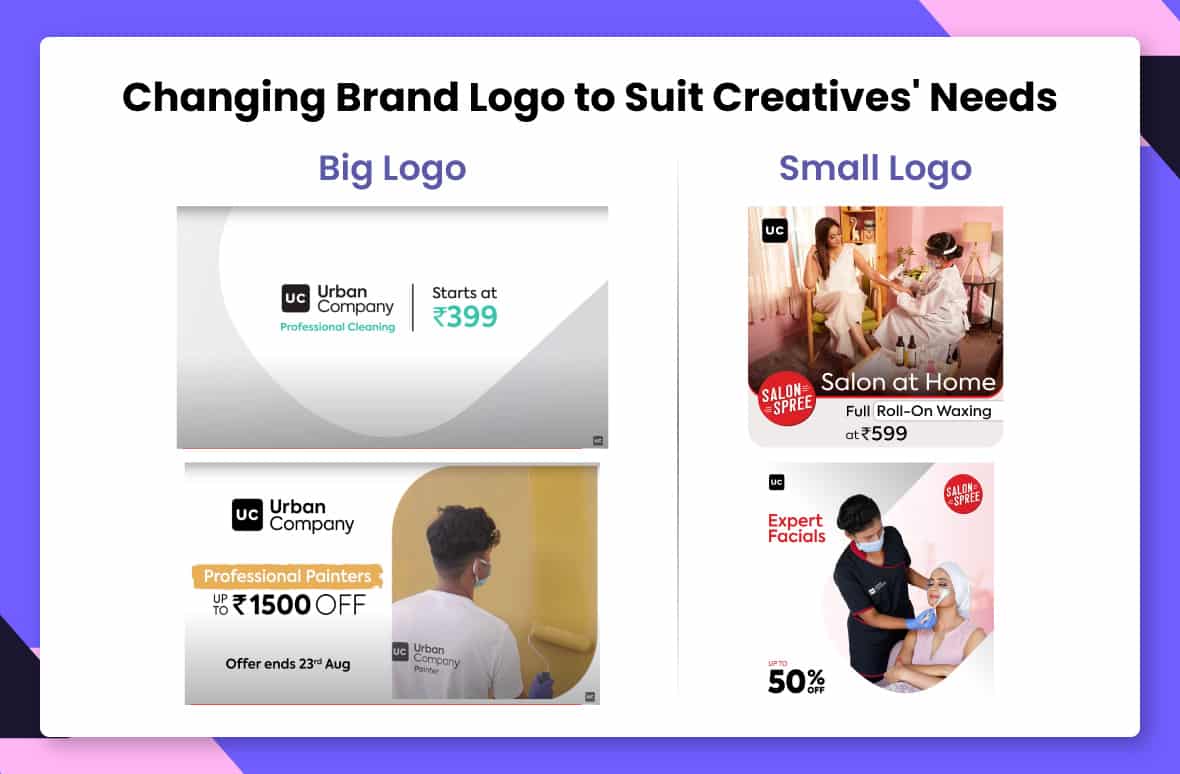
There is an increasing trend of brands experimenting with different colors and fonts to update and refresh their logos.
This can seem to be at odds with the basic rationale for creating a logo which is to create brand recall.
Case in point: some of Urban Company’s latest ad campaigns have depicted the logo in a smaller size and with the brand name missing in some cases!
Khullar explained that Urban Company took the liberty to avoid using the full brand identity in markets where it had already established a presence.
However, in newer markets, such as Tier II cities, they preferred to use full-size logos and taglines. In terms of size, what mattered was the overall placement and the spatial planning of the layout, he observed.
Marketers were conditioned to position their logos at the top left or top right corner based on eye movement.
In Khullar’s view, branding should cater to the general needs of the target market and the overall campaign objective.
When entering a new market, the logo should be big enough relative to the brand device to attract attention.
He reaffirmed a rule of thumb that the size of the creative itself should determine the size of the logo.
However, he stressed the importance of giving equal attention to other branding elements. Next in the order of priority comes the offer.
Unlike OOH, where the logo gets more attention, the offer/discount/sale takes prominence on digital channels.
However, he recommended experimenting with different layouts based on performance. If consumers are familiar with your brand, one can safely reduce the logo size.
Creative automation platforms are proving to be an effective solution to scale campaigns at an affordable cost.
Brands can now reduce the overall campaign cycle time and target their audiences more precisely via creative refresh.
Urban Company is one of the many unicorns that leverage creative automation extensively in their marketing initiatives.
The brand needed to generate fresh creatives daily to drive engagement across various touchpoints, especially during seasonal and holiday campaigns.
However, it encountered many challenges in doing so. At 14 days, the turnaround time for campaigns was extremely high.
Secondly, there were inefficiencies in the design, review, and production processes, making it harder for the marketing team to launch hyper-targeted campaigns on demand.
Urban Company wanted to reduce the marketing teams’ dependence on designers for fresh creatives and better targeting.
Creative automation enabled them to develop on-brand templates that the marketing team could use for making banners and videos.
Thanks to a feed-based interface, they could build creative variations from spread-sheet data in minutes.
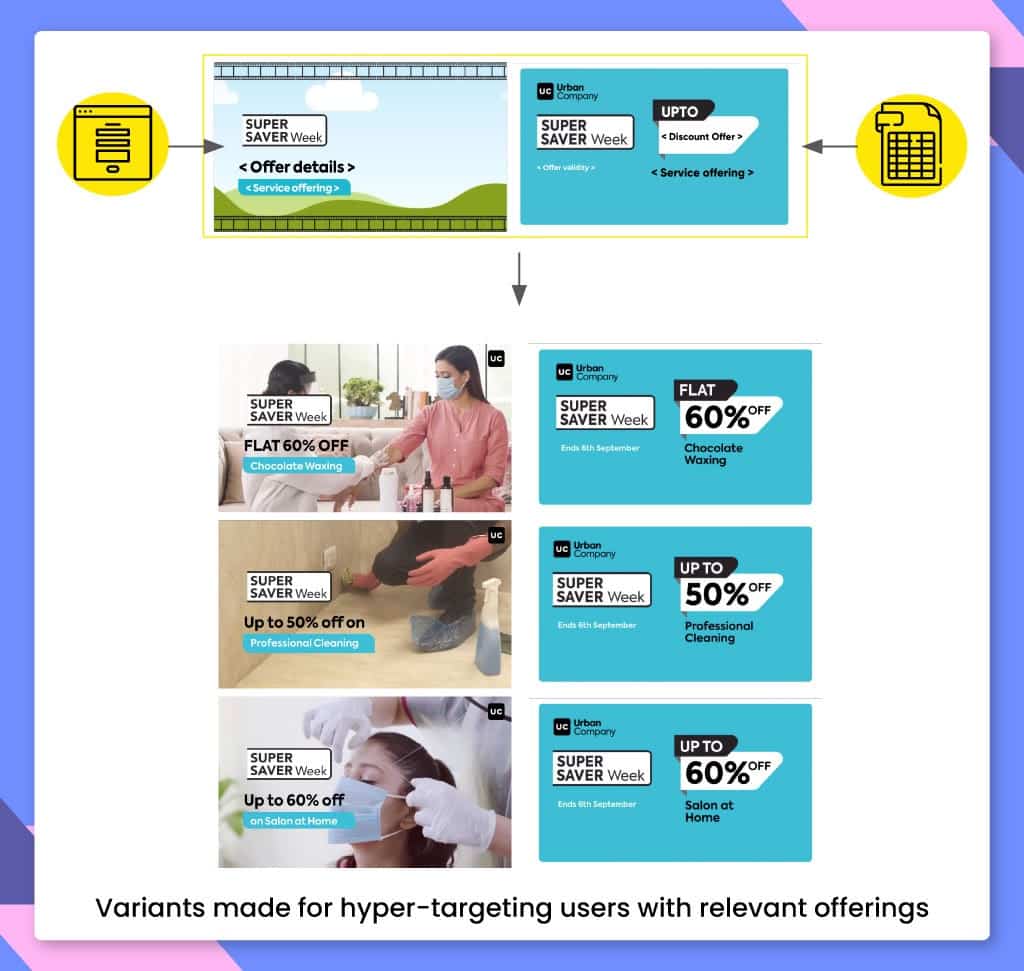
The performance impact was dramatic. They could reduce the lead time by 8X, resulting in a 5X increase in campaigns, enabling hyper-targeting like never before.
The latest creative automation tools are designed for plug-and-play integration into existing workflows, resulting in higher adoption and better collaboration between teams.
This means prompt creative refresh rates and excellent ROI, just like how Urban Company achieved with Rocketium.
As brands adapt to changing market conditions post-pandemic, a steady creative refresh rate is critical.
Using a combination of formats and CTA, the odds of CTR and conversion can be improved by a large margin.
However, consistency in terms of style and branding is equally important to create customer loyalty.
The truth is that routine creative refresh is a tough ask for any creative or marketing team.
However, brands can plug the resource gap with creative automation and easily tailor their messaging to changing trends.
For consumers, this means a consistent and engaging brand experience.
Rocketium enables growth-oriented businesses to scale and automate their creative production in a cost-effective manner.
Our creative automation platform is designed to easily integrate existing workflows, increasing collaboration, efficiency, and transparency across the campaign cycle.